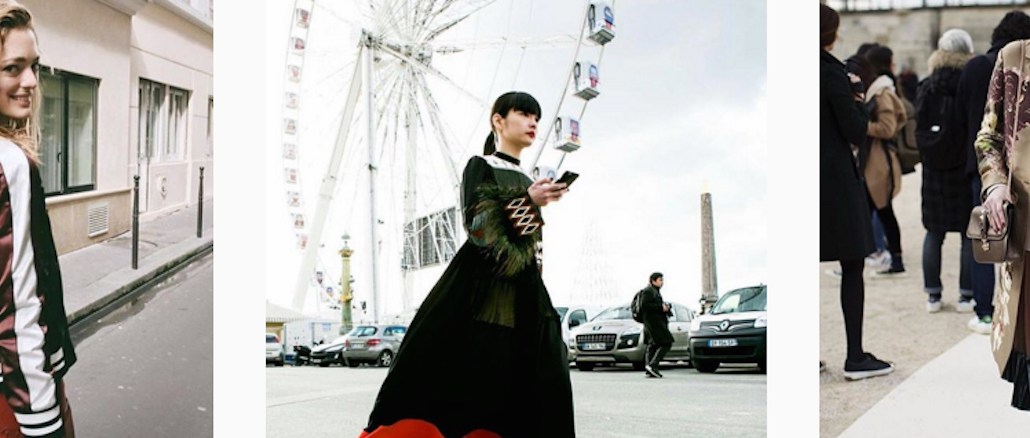Register by Jan 13 to save on passes and connect with marketers from Uber, Bose and more
In the age of the algorithm, top Instagram brand Valentino needs to rethink its strategy

Italian fashion house Valentino has put a lot of muscle behind its Instagram account in the past year. And the effort has paid off. Valentino posts more frequently than any other brand, sees more engagement from followers and responds to commenters at a more consistent rate than other high-end brands. As a result, Valentino has earned the spot as the top performing luxury brand on the platform.
“The brand has done an extremely good job combining high quality, professional product images, celebrity content and user generated content from influencers,” said Bryan Segal, CEO of social technology company Engagement Labs, which ranked Valentino as the best luxury brand on Instagram in a recent study. “What they do works for today’s Instagram and hits the needle for the chronological feed.”
Valentino has 6.3 million followers on Instagram, and sends out an average of 40 updates weekly. According to L2’s 2015 Fashion Index report, Valentino saw the most total engagements for a fashion brand on Instagram: about 60,000, or 10 percent of its audience, interacted with @maisonvalentino between Oct. 2014 and Oct. 2015.
According to Engagement Lab’s study, the most successful fashion houses on Instagram, Twitter and Facebook are using the platforms to create brand awareness, drive brand affinity and drive sales. At Valentino, 2015 saw a big boost in sales: the company reached $1.36 billion in earnings, a milestone marker that CEO Stefano Sassi predicted in 2012 wouldn’t be met until 2017. The figure is a 48 percent increase over 2014’s earnings.
In the earnings announcement, Sassi credited creative directors Maria Grazia Chiuri and Pierpaolo Piccioli, who joined the company in 2008, and their attention to accessories and detail for Valentino’s success. The Valentino “Rockstud” collection — heels and bags adorned with geometric studs — has become a favorite among street style stars, with the hashtag #rockstud gathering nearly 400,000 results on Instagram. Valentino was unavailable to comment for this story.
However, as Instagram plans to change its feed to be based around an algorithm, frequently posting to the platform won’t result in higher overall engagement as it has so far.
“Valentino was capitalizing on the fact that they had created this large audience, and that is a pre-algorithm approach,” said Mariana Rittenhouse, head of brand strategy at Instagram marketing platform Dash Hudson. “They were hitting people because they were always in their feeds. There’s going to be a catch-up period for Valentino where it has to scale back frequency and figure out which content performs best.”

Toni Box, senior director of social media and content at PM Digital, said that fashion brands should “step further away from self-absorbed posts,” such as lookbook and magazine-like images, and instead find new ways to engage audiences. In March, Valentino ran an “Instagram illustration open call,” asking artists to create original work reflecting their dream Valentino outfit, or an abstract piece of art that channels imagery from Valentino collections.
Segal said that Valentino’s tendency to interact with followers on Instagram will pay off. As other luxury brands avoid this strategy in order to maintain its air of exclusivity, Valentino responds to commenters and participates in its community.
“What will serve them well is that they’re not just another brand posting their content onto Instagram, they’re part of the community,” said Segal. “Anything you can do to engage on a deeper level will do well.”
Dash Hudson data showed that user-generated content — posts that tagged Valentino or mentioned it in a hashtag — helped the brand grow its organic reach to 66.2 million impressions in a week. Rittenhouse said that Valentino should do more to incorporate that content into its own feed to attract that organic reach.
“They have the ingredients,” said Rittenhouse. “It’s just a matter of pulling different levers.”
More in Marketing

What does media spend look like for 2026? It could be worse — and it might be
Forecasts for 2026 media spend range from 6.6% on the lower end to over 10% but the primary beneficiaries will be commerce, social and search.

Pitch deck: How Amazon is emerging as the proof layer for TV spend
Amazon is positioning itself to advertisers as the “first-stop shop” for planning, buying, optimizing and measuring TV.

Here are the 2025 brand winners and losers of tariffs
Tariffs completely upended the retail industry in 2025 — and no company was left unscathed.








